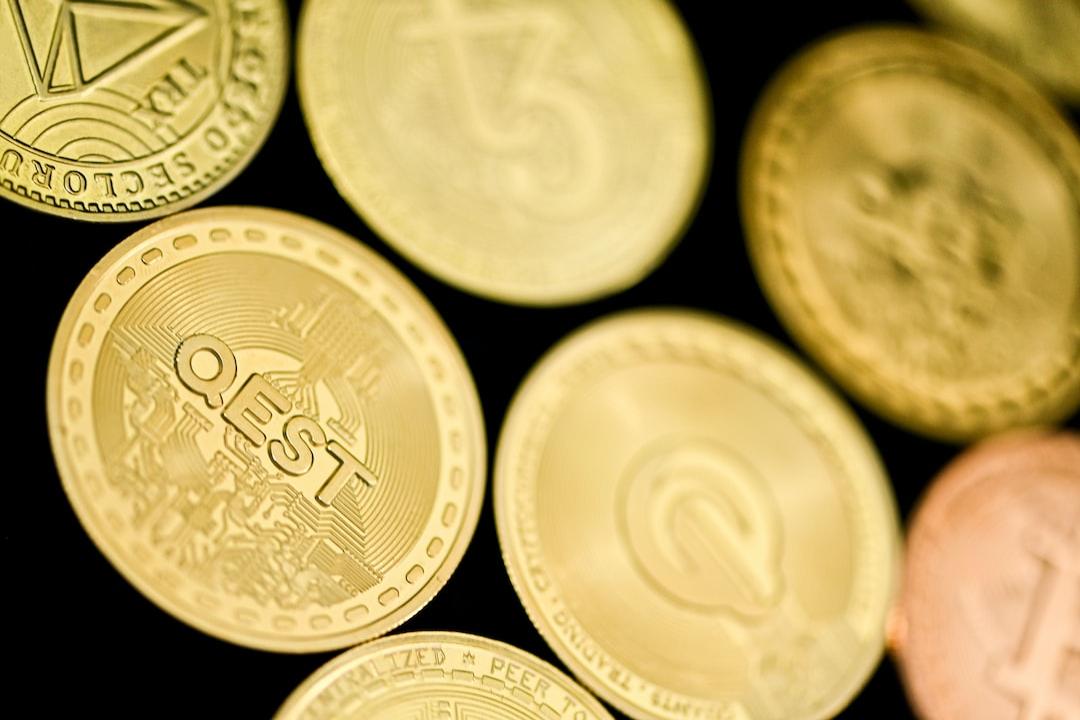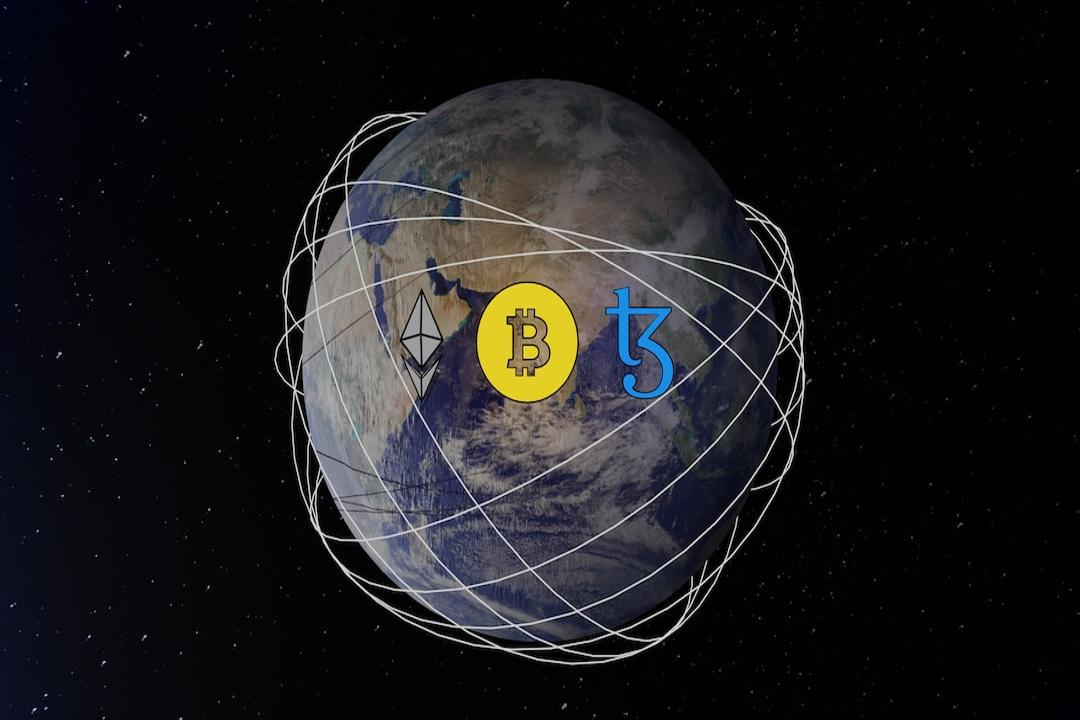On June 15, 2025, the XRP/USD chart on Bitstamp displayed a bearish pennant pattern on the 4-hour timeframe.
A bearish pennant pattern forms when price consolidates between converging trendlines after a sharp downward move and often leads to another drop once support breaks.


In this case, XRP moved sharply lower in late May and has since been trading within narrowing support and resistance lines. The pennant structure is now nearing its apex, and the current price sits at $2.16. Meanwhile, the 50-period Exponential Moving Average (EMA) is above the current price at $2.20, reinforcing overhead resistance.
If XRP breaks below the pennant’s lower boundary, the chart suggests a potential 20 percent drop from the current level. This move would push the price down to approximately $1.74, which aligns with the measured move target from the earlier flagpole.
Volume has also declined during the consolidation phase, which matches typical pennant behavior. If a breakdown follows with rising volume, it would confirm the bearish pattern and strengthen the case for a drop to $1.74050.
Given the rejection at the EMA and lower highs inside the pennant, XRP may soon face downward pressure unless it reclaims the EMA and breaks above $2.30.
XRP DMI Signals Weak Bullish Momentum and Declining Trend Strength
The Directional Movement Index (DMI) for XRP/USD displayed weakening bullish momentum. The indicator consists of three lines:
- +DI (orange): 25.47
- -DI (blue): 15.40
- ADX (red): 27.86
The +DI line remains above the -DI line, showing mild bullish control. However, the gap between the two has narrowed, and the Average Directional Index (ADX), which measures trend strength, is starting to flatten.

For most of May and early June, the ADX stayed under 30, indicating a weak or non-trending market. Although ADX reached above 35 during brief surges, it has not sustained that level, suggesting that XRP’s recent moves lack trend conviction.
Currently, the ADX is at 27.86, below the typical threshold (above 25–30) for strong trend confirmation. Meanwhile, the declining +DI line shows bulls are losing control, while the -DI has slightly picked up.
If +DI crosses below -DI and the ADX continues to drop, it could confirm a bearish reversal. This DMI setup aligns with the bearish pennant structure spotted earlier on the price chart and supports the risk of a breakdown toward $1.74050.
XRP RSI Shows Bearish Momentum Recovery Still Weak
On June 15, 2025, the Relative Strength Index (RSI) for XRP/USD on the daily chart stood at 44.21, while its RSI moving average read 38.69. The RSI measures market momentum on a scale of 0 to 100. Readings above 70 suggest overbought conditions, while values below 30 indicate oversold territory.

XRP recently bounced from the oversold region near 30, but the RSI remains below the neutral 50 level. This signals that bearish pressure still outweighs bullish momentum. The RSI line has crossed above its moving average, suggesting a mild recovery attempt. However, without breaking above 50, the move lacks conviction.
Over the past few weeks, the RSI has struggled to stay above the midline. Each upward movement has faced resistance between the 55–65 zone. The pattern shows repeated failures to build sustained bullish momentum.
If the RSI remains below 50 and turns back downward, it could confirm bearish continuation. This indicator aligns with the bearish pennant and weakening Directional Movement Index (DMI) observed in earlier XRP/USD charts.
XRP MACD Turns Positive But Trend Remains Fragile
Meanwhile, the Moving Average Convergence Divergence (MACD) for XRP/USD printed a weak bullish crossover. The MACD line (blue) is at –0.02317, slightly above the signal line (orange) at –0.02543, while the histogram flipped green with a small reading of 0.00227.

The MACD indicator uses two exponential moving averages—the 12-period and 26-period—to track momentum shifts. A crossover above the signal line often hints at bullish momentum, while a reversal below signals bearish strength.
XRP’s MACD crossed back above the signal line after falling sharply in early June. The current histogram shows early signs of recovery, but the overall MACD level remains in negative territory. This suggests that while short-term momentum is improving, the broader trend has not fully shifted bullish yet.
Over the past two months, MACD crossovers have resulted in brief moves without strong follow-through. The current signal resembles earlier short-lived reversals, which failed to reclaim a sustained uptrend.
If the MACD line continues upward and enters positive territory, it could confirm a momentum shift. However, any stalling or crossover back below the signal line would align with the bearish pennant pattern on the price chart and signal renewed downside pressure.
XRP SMI Crosses Into Bullish Zone But Signal Remains Weak
On June 15, 2025, the Stochastic Momentum Index (SMI) for XRP/USD showed early signs of recovery. The SMI line (blue) is at 19.60, while the signal line (orange) reads 11.60, placing both lines just above the neutral zero level.

The Stochastic Momentum Index compares the current closing price relative to the median of the high-low range over a defined period. Values above 40 suggest strong bullish momentum, while readings below –40 indicate bearish momentum. Crossovers near the zero line often act as early reversal signals.
After bottoming below –80 on June 13, the SMI sharply reversed upward, and the blue SMI line crossed above the orange signal line. This crossover is technically bullish, indicating a potential momentum shift in favor of buyers.
However, the current values remain relatively weak and well below the 40 level. Previous crossovers in this range have often resulted in short-lived price bounces without triggering strong uptrends. If the SMI fails to break above 40 and turns back down, it would confirm that the recovery lacks strength.
This setup aligns with other indicators like the Relative Strength Index (RSI) and Moving Average Convergence Divergence (MACD), which also show early but fragile signs of recovery, suggesting XRP may still face downside risk unless momentum improves further.
Ripple CEO Says XRP Could Handle 14% of SWIFT Volume in Five Years
Ripple CEO Brad Garlinghouse stated that XRP could process up to 14% of SWIFT’s global cross-border volume within the next five years. He made the projection during a panel at the APEX 2025 blockchain summit held in Singapore.
Garlinghouse emphasized that Ripple’s infrastructure already supports high-volume transactions, offering a faster and more cost-efficient alternative to traditional systems. According to him, this advantage positions XRP to capture a large share of the international remittance market.
Currently, SWIFT handles over $5 trillion in daily transfers across borders. Garlinghouse argued that Ripple’s technology can scale to meet such demands, especially as more financial institutions turn to blockchain for settlement solutions.
He also pointed out that regulatory clarity is improving across key regions, which could accelerate XRP adoption. Additionally, Ripple’s expanding partnerships in Latin America, Asia, and the Middle East give it a growing global footprint.
In summary, Garlinghouse said XRP is on track to become a serious competitor to SWIFT. He concluded that Ripple’s growing ecosystem, combined with technological advantages, makes XRP a leading contender in the future of cross-border payments.
Ripple Seeks 60% Penalty Reduction in SEC Settlement Proposal
Ripple’s ongoing legal battle with the U.S. Securities and Exchange Commission (SEC) reached a new stage. The SEC submitted a settlement proposal that would reduce Ripple’s financial penalty from $125 million to $50 million. Additionally, the agency is seeking to lift a long-standing injunction that has limited Ripple’s operations in the market.
Pro-XRP attorney John Deaton explained the implications of the settlement. According to him, removing the injunction would allow Ripple to operate with fewer restrictions, resolving a major issue that has shaped the case since its early stages.
However, Judge Analisa Torres initially rejected the proposed terms. She cited the wrong legal standard used in the filing and noted that neither party had shown “exceptional circumstances” to justify overturning her prior decision. Her pushback reflects the complexity of the case, which has lasted over four years and involved extensive judicial oversight.
Despite the setback, Deaton estimated a 70% chance the settlement could still go through. He believes the court may approve the deal if both Ripple and the SEC present a strong case showing how it benefits the public interest. The parties must demonstrate that settling now would conserve judicial resources, avoid prolonged appeals, and protect investors and crypto firms affected by the ruling.
If approved, the deal would finalize the lawsuit without undoing Judge Torres’ earlier decision that XRP is not a security under U.S. law. That ruling would remain intact, preserving a legal precedent that shapes how cryptocurrencies are classified and regulated in the United States.
Deaton emphasized the broader impact of this case. He said the resolution could clarify key regulatory questions and signal a turning point for digital asset oversight in the country. As both sides work to finalize their arguments, the crypto industry watches closely for what could become a landmark moment in blockchain law.

